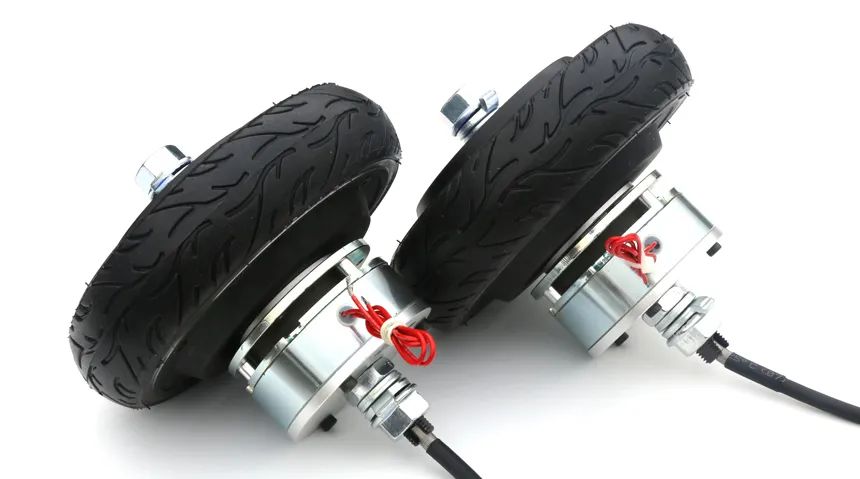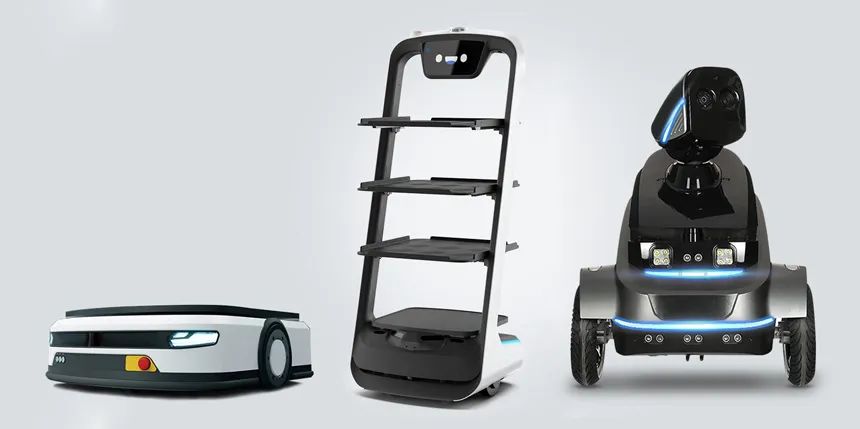Wheel hub motors have many functions, including load-bearing and driving, electronic differential control, braking energy recovery, and so on. In addition, in terms of practical applications, wheel hub motors have been widely used in food delivery robots, intelligent inspection robots, and automatic guided transport vehicles. Now, let's introduce the relevant content in detail.
1、 The function of hub motor
Carrying and driving are essential functions of hub motors. The implementation of load-bearing relies on wheel axle bearings to achieve the centering of the rotor and stator. The vehicle's wheels pass through the wheel axle bearings instead of the stator and rotor being connected to the suspension axle housing to carry road shock absorbers and loads. The implementation method of the drive is to directly connect the outer rotor to the wheel rim, achieving the goal of direct drive.
2. Electronic differential control
Electronic differential control is also one of the functions of hub motors. The actual implementation method is front wheel steering, which is completed by a regular steering gear; The rear wheel needs to be adjusted by electronic differential; The turning radius is determined by the angle of the front wheel steering gear, and the rear wheel slip is determined by the vehicle's turning radius and wheelbase. Calculate the rear wheel slip based on the rotation angle of the front wheel steering gear. The steering gear can also be an electronic steering. Even if the rear wheel cannot be strictly differentiated, the inner wheel should change from "active" to "passive" by disconnecting the motor or connecting compensating resistors in series in the circuit.
The function of the hub motor is also to recover braking energy. During the braking process of an electric vehicle, the kinetic energy of the entire vehicle is transmitted to the motor through the wheels, thereby driving the motor to rotate. At this time, the motor is working in the power generation state, charging the energy storage device, namely the battery or supercapacitor, converting the braking energy into applied energy and storing it in the energy storage device, achieving the regeneration and utilization of energy. At the same time, the resistance torque generated by the motor is applied to the wheels, generating braking torque and playing a role in deceleration and braking. There are two cooling methods for electric motors: air cooling and water cooling. Air cooling, using structures that facilitate gas circulation to cool hub motors, such as built-in cooling fans: water cooling, with dedicated cooling channels set up to cool hub motors through exchange with liquids.

2、 Example application of hub motor
The brief workflow is as follows: guests sit down → use a desktop pager to call the waiter → the robot automatically goes to the guest's table → the customer orders and pays on the PAD in front of the robot's chest → the robot returns to the food transfer port to wait for manual preparation → the robot automatically delivers food to the designated table and prompts the guest to serve the dish → the robot returns to the food transfer port to wait. Delivery robots have been widely used in many high-end restaurants both domestically and internationally, effectively replacing or partially replacing the work of restaurant waiters, providing great convenience for human life.
2. Intelligent inspection robot
With the progress of society, the automation level of substations is constantly improving, and the situation of unmanned operation is becoming more and more common. As a key part of the power system, the safety of substations has an important impact on people's production and life. However, traditional inspection methods can no longer meet the development of modern substations, and intelligent inspection robots are replacing them. Compared to traditional manual inspection, its main advantages include flexible operation, unaffected by external weather, and no physical limitations. Intelligent inspection robots are also widely used in other industries, such as oil and gas transportation and transportation rail.
3. Automatic guided transport vehicle
Due to its advantages of centralized functions, simple aboveground systems, and easy construction and system composition. Therefore, it is widely used in many industries such as mechanical processing, automobile manufacturing, port freight, electronic product assembly, papermaking, power plants, and ultra clean workshops in the electronics industry. Its operating speed can reach 100 meters per minute, and its transportation capacity can range from several thousand grams to tens of tons. With the development of electronic and control technology, the application fields are constantly expanding and have been successfully applied in places such as offices, restaurants, hospitals, and supermarkets, making important contributions to human living standards and economic development.

Shenzhen Zhongling Technology Co., Ltd. was established in 2013 and is a high-tech company that integrates research and development, production, and sales. Shenzhen Zhongling Technology's products mainly include robot AGV wheel servo motor series, integrated open/closed loop stepper motor series, low-voltage DC servo series and equipment, etc. Especially, robot wheel servo motors used in service robots and AGVs have rich experience, and their products are widely used in many service robot companies. The products have the advantages of low noise, smooth operation, high stability and reliability, easy installation, and high cost-effectiveness, solving the pain points in the hearts of service robot companies and promoting the development of the service robot industry.

